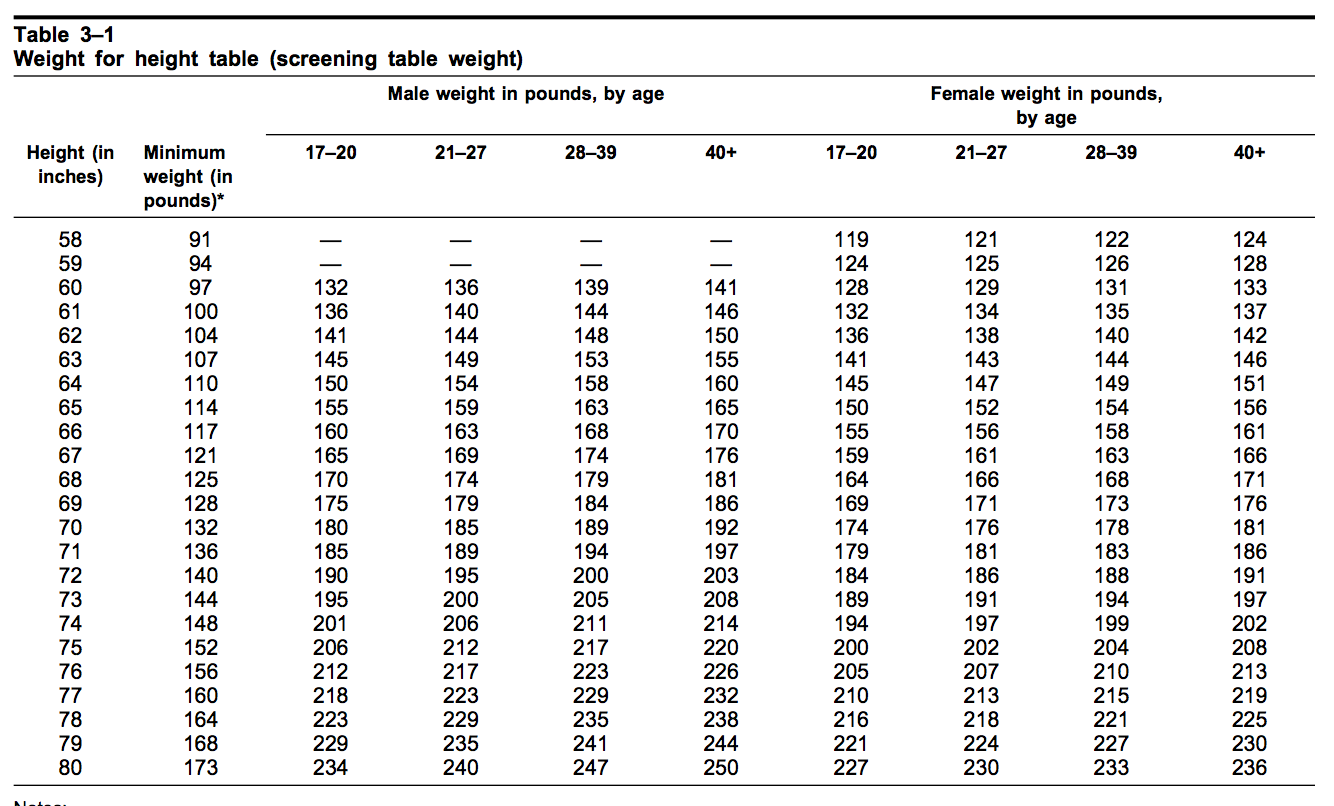

Understanding Army Weight Standards: A Comprehensive Guide
The army weight standards are essential benchmarks that ensure all military personnel maintain a level of physical fitness necessary for their demanding roles. These standards are not arbitrary; they are carefully designed to create a force that is fit, ready, and resilient. For service members, adhering to these weight standards is crucial, as it not only impacts their career progression but also their overall health and performance on the field. The rigorous requirements reflect the military's commitment to physical fitness and operational readiness, which are key to the effectiveness of any army. In this article, we will delve into the intricacies of army weight standards, exploring their significance, the consequences of failing to meet them, and how individuals can maintain their fitness levels to comply with these regulations.
Army weight standards vary depending on several factors, including age, gender, and branch of service. These standards are periodically reviewed and updated to ensure they meet the evolving needs of the military. Understanding these criteria is vital for current service members and those aspiring to join the ranks. We will also discuss the methods used to assess weight and body fat, as well as the available resources for service members to achieve and maintain their fitness goals.
Ultimately, the army weight standards are not just about numbers on a scale; they represent a commitment to a healthier lifestyle and a more capable fighting force. Whether you are a seasoned service member or a recruit preparing for basic training, knowing these standards can help you stay on track and achieve your personal fitness goals.
What are the Army Weight Standards?
The army weight standards are specific guidelines set by the military to ensure that all service members maintain an appropriate weight for their height and body composition. These standards are primarily focused on achieving a certain body fat percentage, rather than just weight, which is a more holistic approach to assessing a soldier's fitness level.
How are Army Weight Standards Measured?
Measurements for army weight standards typically include both weight and body fat percentage. The army uses a combination of height, weight, and body fat calculations to assess whether a soldier meets the requirements. The process generally involves:
- Weighing the soldier on a scale.
- Measuring the soldier's height.
- Calculating body fat using various methods, including tape measurements and, in some cases, more advanced techniques like DEXA scans.
What are the Consequences of Failing to Meet Army Weight Standards?
Failure to meet army weight standards can have several serious consequences for service members. These can include:
- Being placed on a weight management program.
- Potential disciplinary action, including being flagged for adverse action.
- Limitations on promotion opportunities and assignments.
- In extreme cases, separation from service.
How Do Different Branches of the Military Approach Weight Standards?
While the army has its own specific weight standards, other branches of the military, such as the Navy, Air Force, and Marine Corps, also have their guidelines. Each branch focuses on different metrics and has its own methods for assessing fitness, which can lead to variations in what is considered acceptable.
What Resources are Available to Help Service Members Meet Weight Standards?
To support service members in meeting army weight standards, various resources are available, including:
- Fitness training programs and workshops.
- Nutritional counseling and meal planning services.
- Access to fitness facilities and personal trainers.
- Online resources, including fitness apps and websites.
Can Soldiers Appeal Weight Standard Decisions?
Yes, soldiers can appeal decisions related to weight standards. If a soldier believes they have been unfairly assessed, they can present their case for review. This process typically involves providing additional information or evidence to support their claims, such as medical documentation or performance records.
What Role Does Nutrition Play in Meeting Army Weight Standards?
Nutrition plays a vital role in helping service members meet army weight standards. A balanced diet tailored to an individual’s energy needs can significantly aid in weight management and overall health. Important aspects of nutrition include:
- Understanding caloric intake and expenditure.
- Choosing nutrient-dense foods that support physical activity.
- Staying hydrated to enhance performance and recovery.
How Can Soldiers Maintain Their Weight and Fitness Levels?
Maintaining weight and fitness levels requires a consistent approach, including regular exercise, proper nutrition, and adequate rest. Here are some tips for soldiers:
- Establish a structured workout routine that incorporates both cardio and strength training.
- Monitor body composition regularly to track progress.
- Incorporate healthy eating habits into daily life, such as meal prepping and mindful eating.
- Seek support from peers, trainers, or nutritionists when needed.
In conclusion, the army weight standards are crucial components of military life, designed to ensure that all service members are fit for duty. By adhering to these standards and utilizing available resources, soldiers can maintain not only their careers but also their health and well-being. Understanding the weight standards and the implications of meeting or failing them can empower service members to take charge of their fitness journeys and contribute to a stronger, more capable military force.
You Also Like
Unveiling The Life And Career Of Bonita GranvilleExploring The Love Life Of Jessica Springsteen: Who Is Her Boyfriend In 2024?
Unveiling The Ethnicity Of Charles Payne's Wife
Understanding Army Weight Requirements: A Comprehensive Guide
Unveiling The Life And Career Of Frankie Gabriel Iglesias



